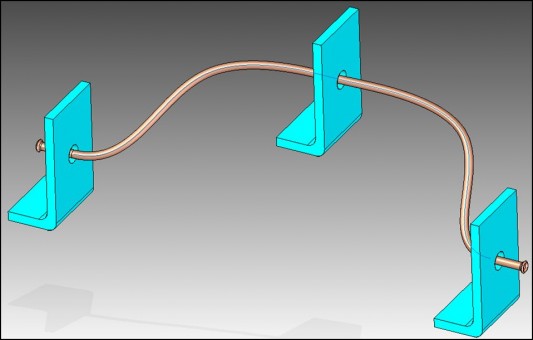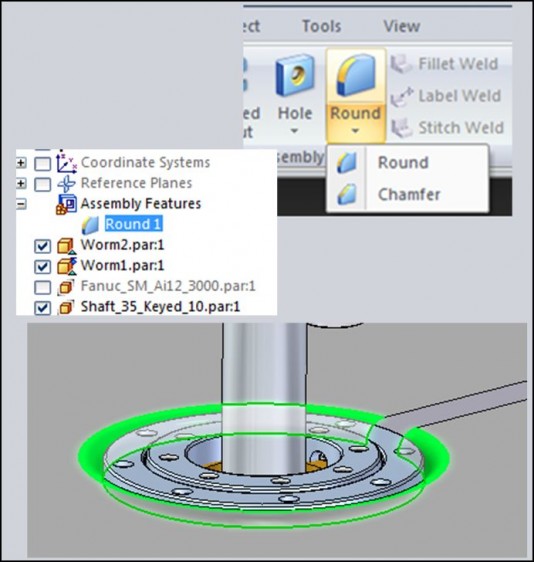Solid Edge was a hidden nugget when Siemens acquired the former UGS; under Newbury’s leadership the nugget is getting polished.

Later this week Siemens PLM Software introduces the latest version of Solid Edge, ST4, to its users at a special launch event in Huntsville, Alabama. Among the Siemens team attending will be Karsten Newbury, senior vice president and general manager for Siemens PLM Software’s Velocity Series, their suite of mainstream PL products.
Velocity Series is a comprehensive family of modular, yet integrated solutions addressing PLM in what Siemens PLM calls the Mainstream market. For years, users of Solid Edge and other Velocity Series product have criticized Siemens PLM (and UGS before the acquisition) of not devoting enough attention or resources to the Mainstream products.
In the interview that follows, Newbury explains what happened, and going forward how Siemens PLM will promote Solid Edge and the other Velocity Series products (Femap for analysis; Teamcenter Express for data management; CAM Express for automated milling). Newbury’s biography on the Siemens PLM Software website describes him as having “a strong history of successful organizational management with a demonstrated ability to build winning teams and improve business performance.”
GraphicSpeak (GfxS): For years Solid Edge users have criticized Siemens PLM Software and UGS before it for how little attention the company paid to the Velocity Series. How have things changed?
Karsten Newbury (KN): We are focusing more on individual product brands more now. For example, the event and launch in mid-June is specifically for Solid Edge ST4, not for our entire Velocity portfolio.
As a division we have changed quite a bit in the last six to 12 months; fundamental changes, some are visible, some less so. I was on the acquisition team when Siemens acquired UGS, and we looked for nuggets. In 2009 we formed a separate, dedicated Velocity segment inside Siemens PLM Software. We saw the Mainstream segment was not visible enough. UGS had previously launched the Velocity portfolio but somehow it got stuck. So we formed the separate unit with the company. The Velocity group includes all the development, technology, marketing, and sales. We work closely with various country groups, field marketing people, and the go-to market people throughout Siemens PLM. We have streamlined resources in the field and created dedicated Velocity teams. There’s been a lot of work going on to create focus and accountability, to treat this unit like a separate business.

We have new marketing leadership in place and we are working more closely with channel partners. In particular we are pushing for a real identity in the marketplace for Solid Edge. We are putting the product brands up top now. The Velocity Series portfolio is a great story, but many customers need a single tool, and prefer to identify with single brands. We want each product to have a clear identity. Solid Edge, for example is all about “Design Better,” our new slogan. Not just “Lets Go Design” [A SolidWorks slogan] but specifically “Design Better.” Synchronous Technology in Solid Edge is a great tool. Users say ST gives Solid Edge great usability and great workflow. We want to drive these ideas into the marketplace.
GfxS: Siemens PLM has products for the largest, enterprise-class manufacturers, and for the SMB and mid-market manufacturers. How do you distinguish between the various market segments?
KN: We look at it as two market segments, Enterprise and Mainstream. Enterprise has more complex, integrated process problem sets which require a holistic viewpoint and the involvement of the entire company. Mostly we are talking about the largest manufacturing firms when we say Enterprise. Mainstream is a huge market. Mainstream customers just want an out-of-the box tool. We have to use different approaches to address the needs of each group. We have two separate segments, two separate teams, in Siemens PLM. Each group approaches the market differently.
Our Enterprise team approaches a client like Canon or Daimler by looking at broad requirements first. But, we sometimes find Enterprise customers who use Solid Edge day-to-day and NX for mechatronics and other high end needs.

The core profile of Solid Edge customers is that they want an out-of-the-box solution. This is a major difference between Enterprise and Mainstream accounts. PLM is a bad word in mainstream. CAD blogger Matt Lombard says “what a different world PLM is,” but now he gets it for the right market. The core characteristic of our Solid Edge customers have not changed. We are focusing on growth segments. We are getting into the BRICs market, Brazil, Russia, India, China. We are expanding our presence. We are learning about regional market requirements, which find their way into our products and our go-to-market strategy. With the release of Solid Edge ST4 we have a ton of new drafting features, which is high on the list of feature requests in China and Russia. Drafting is not that high on US users’ lists of new features. By expanding our footprint we are getting into more functionality and usability.

GfxS: Did anything take you by surprise when you took over the Velocity Series?
KN: The thing that most surprised me about this business is the passion of the users. There are existing users who have strong opinions about our marketing. Some of the criticism is right; we haven’t given our teams the resources to drive more marketing activities. So we have increased budgets. Getting results will take longer than I would like it to. We don’t want to do gimmicky marketing. We want to position our marketing to match who we are. What is our identity? What are we about? This is how we want to drive our message to the marketplace, not simply conduct a nice little campaign. Some of these things take longer than we would like.
One thing about being part of Siemens, when we put our mind to something we have plenty of resources to incrementally build out, to deliver on a plan.
GfxS: Many believe CAD is a mature market, and that future sales cannot compare to the first years of the industry. How do you continue to grow in a mature market?
KN: We believe a market is only saturated if you have no additional value to offer. Our Synchronous Technology in Solid Edge and NX is only scratching the surface. We have incredible potential to continue to make design more intuitive. When people can focus on design more, and think less about the mechanics of constructing the design, it frees up incredible potential and opens up new markets with industrial designers, for example. Synchronous Technology is a new paradigm. We are convinced we offer new value, and intend to lead the market with it.
Beyond that, it still surprises me how many people still use 2D. There is still tremendous opportunity in 3D CAD. There will also be some displacement activities, as customers switch vendors. But without those, we still see big market potential.
It has been said Solid Edge is the best-kept secret in the industry; in mind share we are at a disadvantage. But this is also a big opportunity, because we are not at a technical disadvantage. SolidWorks and Autodesk Inventor have more seats, but every seat of SolidWorks includes Parasolid [3D design kernel sold by Siemens PLM]. So the core Siemens technology is really out there, more than 3 million copies. Solid Edge has hundreds of thousands of seats. We are clearly number three in the market. But have a strong presence, with more users than most people realize. From 2009 to 2010 the number of Solid Edge licenses grew by 50%. That same growth trajectory is continuing in 2011.






